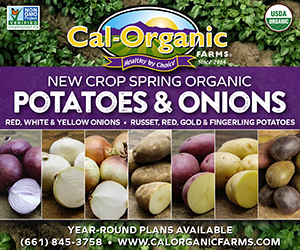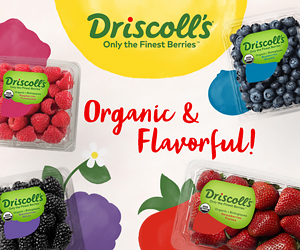Aldo Ramirez is the founder and managing director of Nativa Organics, a company that grows, packs, and exports organic Peruvian ginger. Ramirez was born into a small-scale farming family in Pichanaki, Peru in the late 70s. His grandfather ran the family farm, which was just a handful of acres at the time and grew primarily coffee and oranges, along with a few other items.
With an elevation of about 1,700 feet, Pichanaki is referred to as the “selva alta,” or high jungle, and has a tropical climate perfect for growing ginger. While Peru has been exporting crops such as asparagus, mangos, avocados, oranges, and coffee for quite some time, its entry into the organic ginger market is much more recent—the first successful shipment took place in 2006. Since then, ginger exports from Peru have increased rapidly, boasting an impressive compound annual growth rate of 49 percent between 2007 and 2018.

Aldo Ramirez, Founder, Nativa Organics
Ninety-five percent of Peruvian ginger is organic, and it is well known by importers for its excellent quality. Compared to Chinese ginger, the ginger from Peru is spicier and has both a higher oil and fiber content. “Maybe [our ginger] is not [as] big [in] size when we compare it to Brazil or China, but we have better quality in terms of spice,” Ramirez says, adding that a tea manufacturer once told him that less Peruvian ginger is required to get the same taste intensity as Chinese ginger.
Ramirez’s journey to becoming a ginger exporter began around 2005. He had just moved back to his family farm after living in Lima for a few years, where he had attended university for international business and agriculture and then worked for Camposol as an agronomist cultivating asparagus. He had decided to return home because he missed his family and the natural landscape of the jungle—plus, he had promised his grandfather on his deathbed a few years earlier that he’d eventually take over the family farm.
Not long after he was back, Ramirez found out that one of his former university classmates was in the area and was in the process of starting a ginger export business. While farmers in the region had been growing ginger for more than two centuries (it was first brought to Peru by Asian immigrants in the late 1700s), they had only ever cultivated it on a very small scale for local consumption.

Aldo Ramirez’s journey to becoming a ginger exporter began around 2005
The main export crops of Chanchamayo, the province in which Pichanaki is located, are coffee and oranges, the vast majority of which are grown organically, says Ramirez. He explains that the agricultural practices in the area are influenced by traditional indigenous methods such as terrace farming, contour plowing, intercropping, crop rotation, and the close observation of weather patterns and the lunar cycle.
“The culture for cultivating coffee [in the high jungle] has always been an organic way, so that’s why … we are producing ginger in the same way,” he says. In fact, he adds, organic ginger is frequently intercropped between coffee plants—a technique that helps boost biodiversity, therefore discouraging pest problems.
When Ramirez saw that his former classmate was exporting ginger, he thought to himself, “If he can do it, I can do it!” However, because he didn’t have access to a large amount of working capital at the time, he wasn’t able to export directly. So he initially began his operation by harvesting and packing ginger grown by his family and a few friends and then selling it to an exporter. He did this for several years until one day in the winter of 2011, the exporter he was working with said he didn’t need the ginger Ramirez had prepared for him. This left Ramirez with two full containers of ginger on his hands and a bunch of growers and packers to pay. It was a moment of truth—he was going to have to attempt to export the containers himself.
 Ninety-five percent of Peruvian ginger is organic
Ninety-five percent of Peruvian ginger is organic
He was aware of an upcoming trade show in Germany, and although he’d never traveled abroad before, he began the difficult process of obtaining a visa. “I was very nervous,” he recalls. He had to try to convince the German embassy in Peru that he was truly going on a business trip (rather than using business as a cover for a permanent immigration attempt). To his relief, he was eventually granted the visa, and so he hopped on a plane to Europe. After a lot of questioning and a thorough search by customs (they told him he didn’t look like a businessman), Ramirez finally made it to the trade show where he found a buyer.
However, when he arrived back in Peru, he was met with a new challenge. Since ginger is grown in the same region as coca leaves (the raw material used for cocaine), and Ramirez was unknown at the time to the shipping companies, he struggled to find a ship that would take his containers. Thankfully, he was eventually able to locate one—and he’s been directly exporting his ginger ever since.
Over the last nine years, Ramirez’s operation has experienced steady growth as the demand for organic ginger continues to increase. He now works with 50 growers and ships containers weekly to the US and Europe, with a total export volume of about 2,000 tons a year.
 The high jungle has a tropical climate perfect for growing ginger
The high jungle has a tropical climate perfect for growing ginger
Currently, Ramirez is working on establishing a year-round ginger program. He says when he first started exporting ginger, buyers wanted it from August to January, but now they want it throughout the year. In order to meet this new demand, some of his growers are planting earlier, some are keeping their ginger in the ground longer, and others are finding different areas for planting (Chanchamayo has a variety of microclimates, which affect ginger’s maturation period). And in 2019, Ramirez created Frunature, a sister company in Miami, in order to import and distribute his ginger year-round to the East Coast and the Midwest. (For West Coast distribution, he works with a separate import company.)
Peru’s indigenous roots, which include traditional cultivation methods, are very important to Ramirez, so he’s been thrilled to see an increase in demand for his country’s organic products. “There is an ancestral culture in Peru for producing … in the natural way, an organic way,” he says. “It’s exciting that we’re finding markets for our products, for our way of cultivating. … Ten years ago or twenty years ago, many people were not interested in this. … You [couldn’t] find a market; you [couldn’t] find really fair prices for selling your product. But now … we have an opportunity to develop our produce, to sell our produce at a fair price, to make a living on this.”






